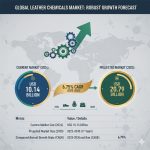Global Medical Plastics Market
The Global Medical Plastics Market is valued at USD 50.8 Billion in 2022 and is projected to reach a value of USD 86.4 Billion by 2030.
The global Medical Plastics market is experiencing significant growth, driven by advancements in healthcare technology and the increasing demand for high-performance and cost-effective medical devices and equipment.
Medical Plastics play a crucial role in the healthcare industry, offering properties such as biocompatibility, durability, flexibility, and ease of sterilization. They are widely used in applications such as medical packaging, surgical instruments, implants, diagnostic equipment, and drug delivery systems. With a projected CAGR 7.9% from 2023 to 2030, the global Medical Plastics market presents lucrative opportunities for manufacturers and suppliers.
Click To Get a Free Sample On the Research Study

Key Factors Influencing the Medical Plastics Market
The growth of the global Medical Plastics market can be attributable to the following
- Technological Advancements in Healthcare:
Advancements in healthcare technology, including diagnostic imaging, minimally invasive surgeries, and personalized medicine, are driving the demand for innovative medical devices and equipment. Medical Plastics, with their exceptional properties and design flexibility, are enabling the development of cutting-edge medical products. The integration of up-and-coming technologies such as 3D printing and nanotechnology has further expanded the possibilities for medical plastic applications, fostering market growth.
- Growing Demand for Lightweight and Disposable Medical Devices:
The need for lightweight and disposable medical devices is increasing due to factors such as cost-effectiveness, convenience, and infection control. Medical Plastics offer excellent solutions in this regard as they are lightweight, easy to manufacture, and can be disposed of after use. They find extensive use in single-use medical devices such as syringes, catheters, and surgical instruments, reducing the risk of cross-contamination and improving patient safety.
- Increasing Focus on Infection Control:
Infection control is a critical concern in healthcare settings, driving the demand for materials that can be easily sterilized and have antimicrobial properties. Medical Plastics can be effectively sterilized using various methods that include steam, ethylene oxide, and gamma radiation. Moreover, certain Medical Plastics are formulated with antimicrobial additives to inhibit the growth of bacteria and other pathogens, making them suitable for applications that require high levels of cleanliness and hygiene.
- Regulatory Standards and Safety Compliance:
The medical industry is highly regulated, with stringent standards and safety requirements to ensure patient safety and product efficacy. Medical Plastics must comply with specific regulations and certifications to be used in healthcare applications. Manufacturers in the Medical Plastics market need to meet these regulatory standards, such as the FDA (US Food and Drug Administration) regulations and ISO certifications, to provide assurance to healthcare providers and end-users.
- Growth in Healthcare Expenditure and Aging Population:
The global healthcare expenditure is continuously increasing, driven by factors such as population growth, rising chronic diseases, and advancements in medical treatments. As a result, there is a higher demand for medical devices, equipment, and consumables. Additionally, the aging population is growing, leading to a higher prevalence of age-related conditions that require medical interventions. These factors contribute to the growth of the Medical Plastics market as they drive the need for innovative and cost-effective healthcare solutions.
Largest Region in the Medical Plastics Market
North America holds a substantial part of the share in the global Medical Plastics market. The region’s well-established healthcare infrastructure, technological advancements, and high healthcare expenditure drive the demand for Medical Plastics. Additionally, the presence of major medical device manufacturers and the focus on research and development further contribute to North America’s market dominance.
Conclusion
In conclusion, the global Medical Plastics market is witnessing significant growth due to the advancements in healthcare technology and the increasing demand for high-performance and cost-effective medical devices and equipment. Factors such as technological advancements, the need for lightweight and disposable medical devices, infection control requirements, regulatory compliance, and the growth in healthcare expenditure and aging population are influencing the market’s expansion. With North America leading the market, other regions of the world such as Europe, Asia Pacific, and Latin America are also experiencing substantial growth in the Medical Plastics market. To capitalize on the market opportunities, manufacturers should focus on innovation, product development, and compliance with regulatory standards to meet the evolving needs of the healthcare industry.
The well-known players of the Global Medical Plastics Market include SABIC (Saudi Arabia), BASF (Germany), Celanese (US), Evonik (Germany), Solvay (Belgium), Covestro (Germany) and others.
![[Market Research Reports] – Research Google News Blog | VMR.Biz](https://www.vmr.biz/wp-content/uploads/2022/12/logo-removebg-preview.png)











